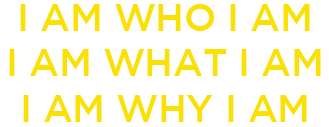Posted at 01:49h
in
Framework
There is a classic Zen story of two monks and a girl:
An old monk and a young monk were walking together to their monastery and came to a river with a strong current. As the monks started to cross the river, a young and beautiful girl called out to them asking for help to cross the river as she feared its current. While the monks had taken vows never to look or touch a woman, the older monk picked the girl up on his shoulders and carried her across. Then the girl went her way and the monks continued their walk to the monastery.
The young monk was shocked by what had just happened but spoke not a word. After a couple of hours the young monk could not contain himself and said: "As monks we have vowed not to look or touch a woman, how could you carry that girl on your shoulders?" The older monk looked at the younger monk and replied: "Brother, I set her down on the river bank a couple of hours ago, why are you still carrying her?"
This is a story about living in the present, not living preoccupied by events now passed. The purpose of meditation and vows is to unshackle oneself from the prison of the past which the old monk has but the young monk hasn't. The story is about the role of vows, meditations, diets and other disciplinary tools deployed by those on the path to enlightenment. These tools are tools. However, often these tools are held sacred as the means and the end of righteous practice, which explains the reaction of the young monk. The older monk is enlightened. He hears a voice crying for help and does what he can to help. The vows are artificial constructs which ultimately mean nothing to him. The girl too is an artificial construct, not a girl but only a voice crying for help.
Another, more graphic version of this story describes two monks who were making their way from one monastery to another. They had been practicing meditation together for many years and were very good friends. In fact, not only were they close friends, but there was also a teacher-student relationship in place – one of the monks was much older and had been a monk since long before the other monk was born. Their journey involved many days traveling on foot. As the two monks walked through the forests and countryside, they spent a great deal of time discussing various aspects of the Buddhism.
At a certain point in their journey, the monks heard the screams of a woman coming from a nearby river. They rushed to see what was happening and in the middle of the river they saw a naked woman who was drowning. The older monk swiftly threw off his robes, dove into the water and rescued the woman. He then brought her to the riverbank and proceeded to cover her with his spare robes. After assuring himself that she was safe and well, the two monks continued on their journey.
The rest of their journey was quite different. The river incident had quite an effect on the younger monk who for the rest of the journey was surly and refused to even speak to the older monk.
A few days later, the monks arrived at their destination – a monastery they were going to stay for the next few months. At this point, the young monk started to ostracize the older monk and refused to even acknowledge his presence. The older monk was rather dismayed and worried about the comportment of his friend, so he confronted the younger monk: “Please, young sir, why have you changed? What have I done to warrant being treated in this manner? If I have said or done something that has hurt you then I am truly sorry and I must have done it mindlessly and certainly without intention”. The young monk replied: “You are not a true monk – you have broken the vows we've taken and as such, I no longer wish to be associated with you”. The older monk was rather shocked to hear this and asked what rules had been broken. The younger monk replied: “Not only did you touch a woman but you touched a naked woman and gave her the robes of a monk”. “How very true” replied the elder, “I saved the woman and carried her to the banks of the river, I made sure that she was warm and well and then I left her. However, it would appear that you are still carrying her around on your shoulders! In all these years of so-called practice of the Buddhist path, you have learned absolutely nothing. You cannot live without your rules and regulations – what a small and wasted life!”
The graphic version of the story provides further insights into Zen. (1) One purpose of life is to make this world a bit better than it would be otherwise; take every opportunity to do so, which is what the older monk did in helping the girl from drowning. (2) Treat others as you wish to be treated which is why the older monk provided the girl his comfortable robes and made sure she was safe and well. (3) Don't take your view of a situation too seriously as by doing so you will fail to learn from the situation (as the young monk failed), make a fool of yourself or cause the demise of your relationships with others. (4) Don't be judgmental of others as by doing so you may cause yourself to be indicted. (5) An enlightened monk is one with everything, not conflicted by duality. As such, even though both the monk and the girl were naked, the monk was not sexually attracted or repulsed by her....

